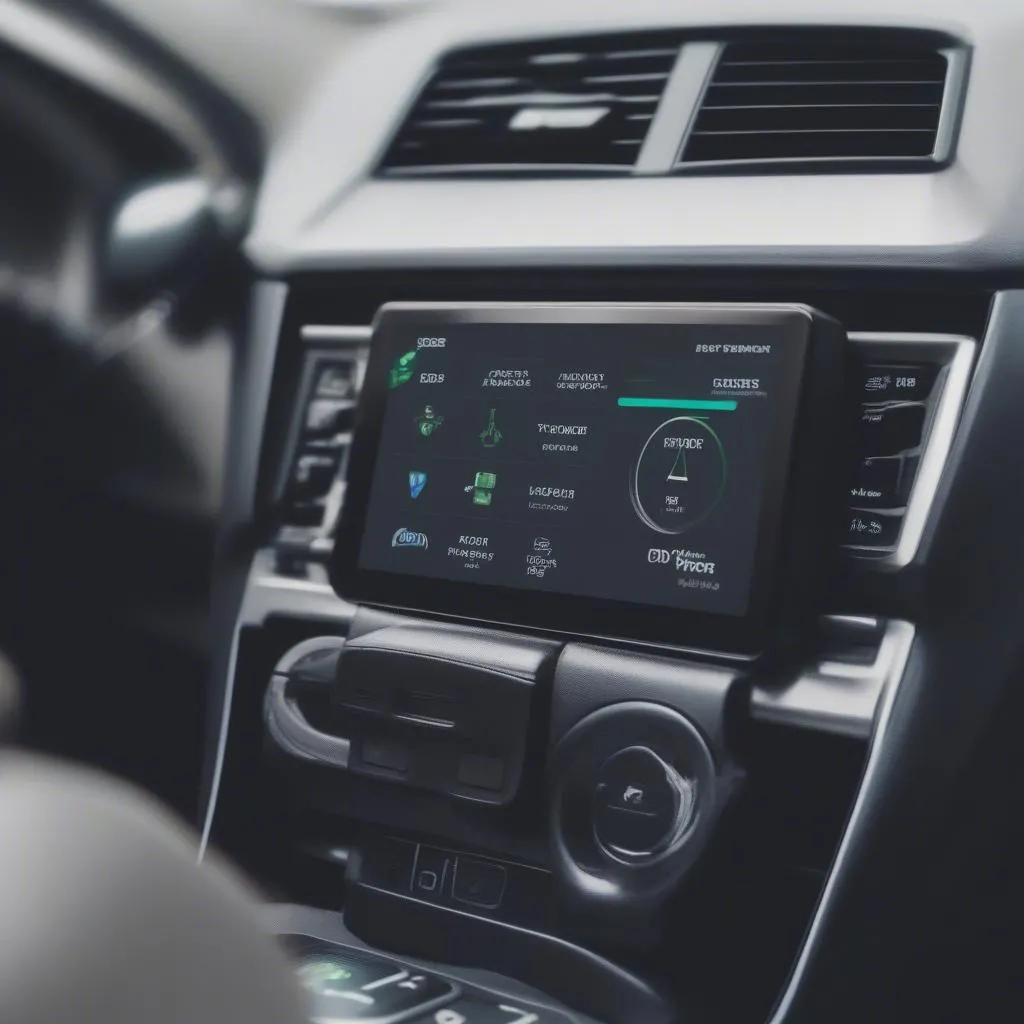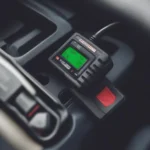Have you ever been driving down the road when your car’s check engine light comes on? Or maybe you’re trying to diagnose a problem with your car, but you’re not sure where to start? If so, you’re not alone. Many car owners have experienced this frustrating situation. Fortunately, there’s a tool that can help: a scan tool for diagnostic trouble codes (DTCs).
What is a Scan Tool for Diagnostic Trouble Codes (DTCs)?
A scan tool is a device that allows you to communicate with your car’s onboard computer system. This system, known as the Electronic Control Unit (ECU), stores a wealth of information about your vehicle, including diagnostic trouble codes (DTCs).
Why are Scan Tools for DTCs Important?
Imagine a car’s engine is like a complex orchestra, with many different components working together. The ECU acts as the conductor, monitoring these components and ensuring they’re working in harmony. When something goes wrong, the ECU records the error in the form of a DTC.
Understanding Diagnostic Trouble Codes (DTCs)
DTCs are essentially error messages that tell you what’s wrong with your car. They use a standardized code system, typically consisting of a letter (P, C, B, or U) followed by a numerical code, to pinpoint the specific problem.
How Scan Tools for DTCs Work
Scan tools connect to your car’s On-Board Diagnostic (OBD) port, which is usually located under the dashboard. They use a communication protocol, such as OBD-II, to communicate with the ECU. The scan tool then retrieves the stored DTCs and displays them on the screen.
Types of Scan Tools for DTCs
There are various types of scan tools available, each with its own set of features and capabilities. Some popular options include:
1. Basic Scan Tools
These are the most affordable scan tools and typically offer basic functionality, such as reading and clearing DTCs. They are ideal for DIYers and home mechanics who only need to perform basic diagnostics.
2. Advanced Scan Tools
These scan tools offer more advanced features, such as reading live data, performing actuator tests, and accessing manufacturer-specific data. They are often used by professional mechanics and technicians.
3. Dealer-Level Scan Tools
These scan tools are designed for use by authorized dealerships and provide access to the most comprehensive vehicle data, including programming and calibration functions.
Benefits of Using a Scan Tool for DTCs
There are numerous benefits to using a scan tool for DTCs:
1. Accurate Diagnoses:
A scan tool can provide an accurate diagnosis of what’s wrong with your car, saving you time and money on unnecessary repairs.
2. DIY Troubleshooting:
Scan tools allow you to perform basic diagnostics yourself, saving you the cost of taking your car to a mechanic.
3. Preventative Maintenance:
By monitoring DTCs, you can identify potential problems before they become major issues, helping to prevent costly repairs down the road.
4. Peace of Mind:
Knowing the cause of a problem gives you peace of mind, allowing you to address it effectively.
Factors to Consider When Choosing a Scan Tool for DTCs
When choosing a scan tool for DTCs, it’s important to consider your needs and budget. Here are some key factors:
1. Vehicle Compatibility:
Ensure the scan tool is compatible with your car’s make, model, and year. Some scan tools are compatible with a wide range of vehicles, while others are specific to certain brands or models.
2. Features:
Consider the features you need. For basic diagnostics, a basic scan tool may suffice. However, if you need more advanced features, consider an advanced scan tool.
3. Price:
Scan tools range in price from a few hundred dollars to over a thousand dollars. Set a budget and choose a scan tool that fits your needs and financial constraints.
Frequently Asked Questions (FAQs)
Here are some common questions people ask about scan tools for DTCs:
1. Can I Clear DTCs Myself?
Yes, you can clear DTCs using a scan tool. However, it’s essential to understand the underlying problem before clearing the code. Simply clearing the code without addressing the issue may cause the check engine light to return.
2. How Often Should I Use a Scan Tool?
It’s a good idea to use a scan tool regularly, especially if your car is experiencing any problems. However, even if your car seems to be running fine, checking for DTCs can help identify potential issues before they become major problems.
3. What Are Some Common DTCs?
Some common DTCs include P0300 (Misfire), P0171 (Fuel System Too Lean), and P0420 (Catalyst System Efficiency Below Threshold).
4. Where Can I Buy a Scan Tool?
You can purchase scan tools online, at automotive parts stores, and at some auto repair shops.
Conclusion
Using a scan tool for DTCs is a valuable tool for any car owner. It can help you diagnose problems accurately, perform basic diagnostics yourself, and identify potential issues before they become major problems.
If you’re looking for a Dealer Scanner for European Cars, we can help! Just contact us on Whatsapp at +84767531508, and we’ll be happy to assist you.
Don’t let a mysterious check engine light throw you off! Empower yourself with the knowledge and tools you need to maintain your vehicle and enjoy a smooth and enjoyable driving experience.



